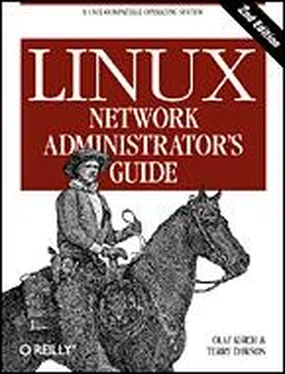checkgroups
This message requests that news administrators resynchonrize their active newsgroups database against the list of newsgroups supplied in the control message.
newgroup
This message requests the creation of a new newsgroup. The body of the control message should contain a short description of the purpose of the newsgroup to be created.
rmgroup
requests that a newsgroup be removed.
sendsys
This message requests that the sys file of this news server be transmitted by mail to the originator of the control message. RFC-1036 states that it is a requirement of Usenet membership that this information be publicly available because it is used to keep the map of Usenet up to date.
version
This message requests that the hostname and version of news server software be returned to the originator of the control message.
all
This is a special coding that will match any control message.
The message field may include the following actions:
doit
The requested command is performed. In many cases, a mail message will be sent to the administrator to advise them that the action has taken place.
doit= file
This is the same as the doit action except that a log message will be written to the file log file. If the specified file is mail , the log entry is sent by email. If the specified file is the null string, the log message is written to /dev/null and is equivalent to using the unqualified doit action. If the file name begins with a / character, the name is taken to be an absolute filename for the logfile; otherwise, the specified name is translated to /var/log/news/file.log .
doifarg
The requested command is performed if the command has an argument. If the command has no argument, the control message is ignored.
drop
The requested command is ignored.
log
A log message is sent to the stderr output of the innd process. This is normally directed out to the /var/log/news/errlog file.
log= file
This is the same as a log action, except the logfile is specified as per the rules given for the doit = file action.
mail
An email message is sent to the news administrator containing the requested command details. No other action takes place.
verify-*
If an action begins with the string " verify- ", then the control message is authenticated using PGP (or GPG). [139] PGP and GPG are tools designed to authenticate or encrypt messages using public key techniques. GPG is the GNU free version of PGP. GPG may be found at http://www.gnupg.org/, and PGP may be found at http://www.pgp.com/.
So that you can see what a control.ctl file would look like in practice, here is a very short illustrative sample:
## Sample /etc/news/control.ctl
##
## Warning: You should not use this file, it is illustrative only.
## Control Message Handling
all:*:*:mail
checkgroups:*:*:mail
ihave:*:*:drop
sendme:*:*:drop
sendsys:*:*:log=sendsys
senduuname:*:*:log=senduuname
version:*:*:log=version
newgroup:*:*:mail rmgroup:*:*:mail
## Handle control messages for the eight most important news heirarchies
## COMP, HUMANITIES, MISC, NEWS, REC, SCI, SOC, TALK
checkgroups:*:comp.*|humanities.*|misc.*|news.*|rec.*|sci.*|soc.*|talk.*:drop
newgroup:*:comp.*|humanities.*|misc.*|news.*|rec.*|sci.*|soc.*|talk.*:drop
rmgroup:*:comp.*|humanities.*|misc.*|news.*|rec.*|sci.*|soc.*|talk.*:drop
checkgroups:group-admin@isc.org:*:verify-news.announce.newgroups
newgroup:group-admin@isc.org:comp.*|misc.*|news.*:verify-news.announce.newgroups
newgroup:group-admin@isc.org:rec.*|sci.*|soc.*:verify-news.announce.newgroups
newgroup:group-admin@isc.org:talk.*|humanities.*:verify-news.announce.newgroups
rmgroup:group-admin@isc.org:comp.*|misc.*|news.*:verify-news.announce.newgroups
rmgroup:group-admin@isc.org:rec.*|sci.*|soc.*:verify-news.announce.newgroups
rmgroup:group-admin@isc.org:talk.*|humanities.*:verify-news.announce.newgroups
## GNU (Free Software Foundation)
newgroup:gnu@prep.ai.mit.edu:gnu.*:doit
newgroup:news@*ai.mit.edu:gnu.*:doit
rmgroup:gnu@prep.ai.mit.edu:gnu.*:doit
rmgroup:news@*ai.mit.edu:gnu.*:doit
## LINUX (Newsfeed from news.lameter.com)
checkgroups:christoph@lameter.com:linux.*:doit
newgroup:christoph@lameter.com:linux.*:doit
rmgroup:christoph@lameter.com:linux.*:doit
The inn source package provides a script suitable for starting inn at boot time. The script is usually called /usr/lib/news/bin/rc.news . The script reads arguments from another script, usually called /usr/lib/news/innshellvars , which contains definitions of the filenames and filepaths that inn will use to locate components it needs. It is generally considered a good idea to execute inn with the permissions of a non-root user, such as news.
To ensure that inn is started at boot time, you should check that /usr/lib/news/innshellvars is configured correctly and then call the /usr/lib/news/bin/rc.news script from a script executed at boot time.
Additionally, there are administrative tasks that must be performed periodically. These tasks are usually configured to be executed by the cron command. The best way to do this is to add the appropriate commands to your /etc/crontab file, or even better, create a file suitable for the /etc/cron.d directory, if your distribution provides one. An example of such a file might look like:
# Example /etc/cron.d/inn file, as used in the Debian distribution.
#
SHELL=/bin/sh
PATH=/usr/lib/news/bin:/sbin:/bin:/usr/sbin:/usr/bin
# Expire old news and overview entries nightly, generate reports.
15 0 * * * news news.daily expireover lowmark delayrm
# Every hour, run an rnews -U. This is not only for UUCP sites, but
# also to process queued up articles put there by in.nnrpd in case
# innd wasn't accepting any articles.
10 * * * * news rnews -U
These commands will ensure that old news is automatically expired each day, and that any queued articles are processed each hour. Note also that they are executed with the permissions of the news user.
Managing INN: The ctlinnd Command
The INN news server comes with a command to manage its day-to-day operation. The ctlinnd command can be used to manipulate newsgroups and newsgroup feeds, to obtain the status, of the server, and to reload, stop, and start the server.
You'd normally get a summary of the ctlinnd command syntax using:
# ctlinnd -h
We'll cover some of the more important uses of ctlinnd here; please consult the ctlinnd manual page for more detail.
Use the following syntax to add a new group:
ctlinnd newgroup group rest creator
The arguments are defined as follows:
group
The name of the group to create.
rest
This argument should be coded in the same way as the flags field of the active file. It defaults to y if not supplied.
Читать дальше



![Andrew Radford - Linguistics An Introduction [Second Edition]](/books/397851/andrew-radford-linguistics-an-introduction-second-thumb.webp)








